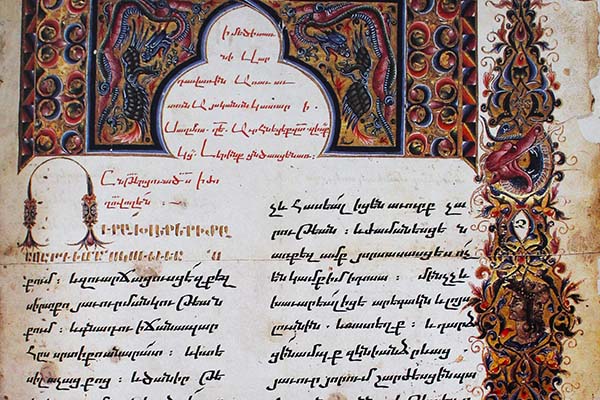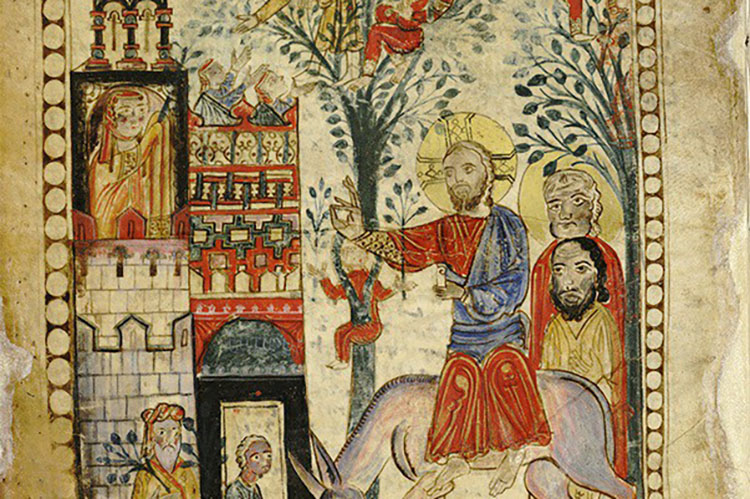
The Bible passages read on Sunday during the Badarak, or on any other day of the year during the church services, are appointed in the Armenian Church’s Lectionary, which is called the Jashots Keerk. Guided by this book, every Armenian Church in the world reads the very same Bible selections each day of the year. Every church tradition has its own distinctive Lectionary system: a unique listing of readings for each day of the year, and underlying it, a unique theological rationale for selecting specific readings for each particular day.
The lectionary of the Armenian Church is one of the oldest in all of Christendom. Its basic outline of Scripture readings was defined by the early Christians of Jerusalem, the birthplace of the Christian faith, by around the turn of the fifth century. There in Jerusalem, amidst all of the holy places where so many of the historical events of the Old and New Testaments took place, Christians selected readings from Scripture that were appropriate not only to the day, but also to the sacred shrines where they would gather for their worship: Golgotha, Bethlehem, Mount Tabor, the Upper Room at Sion, and others.
Armenians were a visible minority among the many nationalities living and praying in the Holy Land in the fourth and subsequent centuries. Among them were the disciples of Sts. Sahak and Mesrob, creators of the Armenian alphabet and translators of the Bible. By the 430s at the latest, these saintly Armenian scholars translated the local Lectionary of Jerusalem from Greek, the spoken language of Jerusalem, into Armenian for use in the Armenian Church. Many of the holy places of Jerusalem are still mentioned in ancient Armenian Jashots manuscripts.
Over the centuries, the Jashots gradually developed a more authentically Armenian Christian profile as our Armenian Church fathers and teachers augmented the Lectionary from Jerusalem with new readings appointed for feasts and saints’ commemorations that were unique to the Armenian Church. Nevertheless, the old Jerusalem core remains readily discernible to the trained eye.
We should not underestimate the theological sophistication underlying the selection and sequence of Bible readings in the Armenian Jashots. Although it may no longer be evident to the average Armenian churchgoer, “between the lines” of the apparently random Bible readings is to be uncovered an elegant expression of the theology of the liturgical year, which is nothing else but a uniquely Armenian witness to our salvation in Jesus Christ.
Source: Frequently Asked Questions on the Badarak, The Divine Liturgy of the Armenian Church by Michael Daniel Findikyan.

